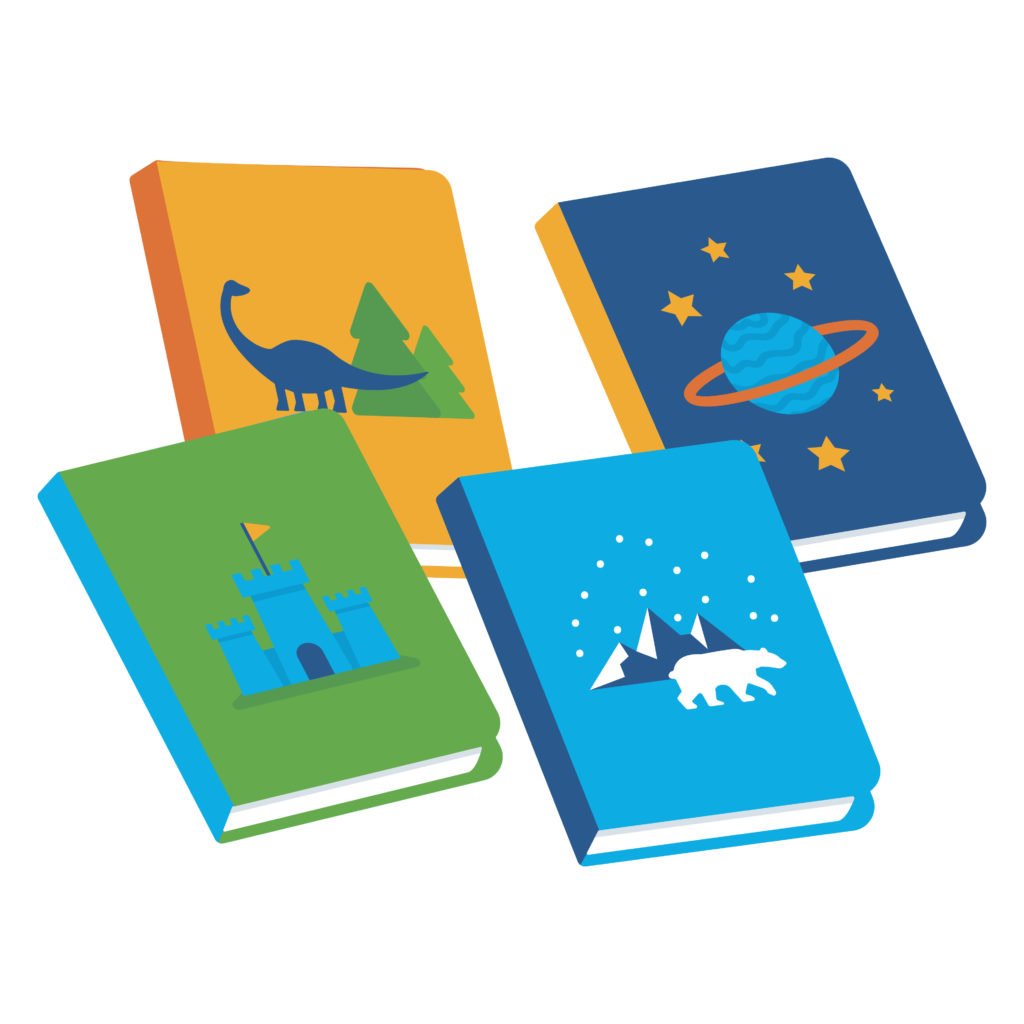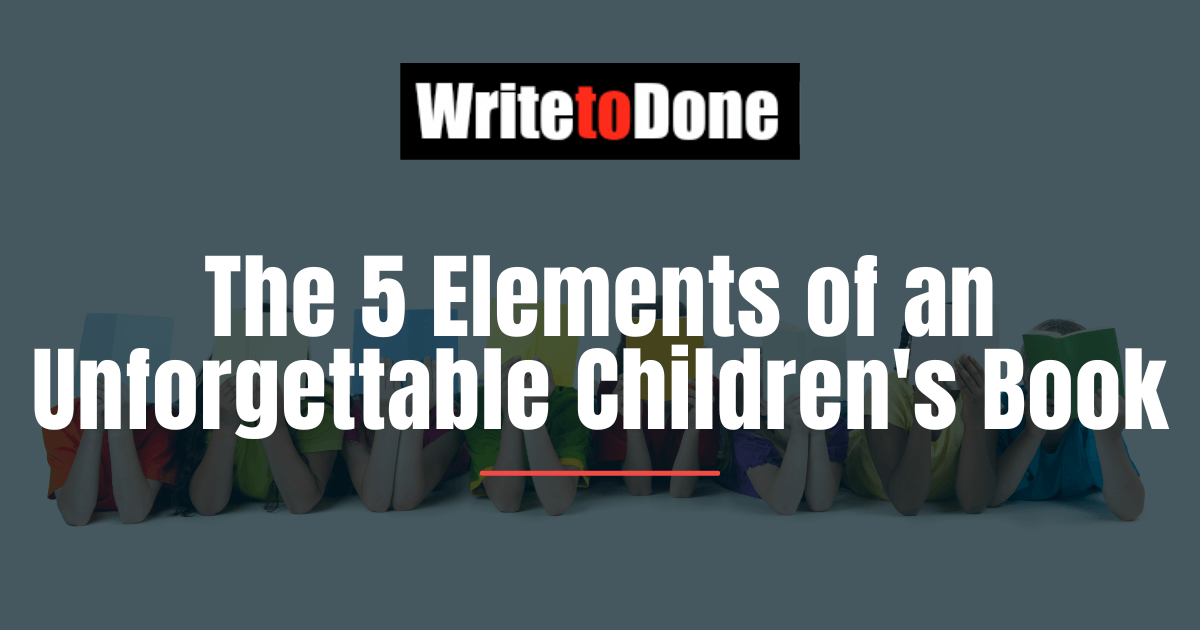Writing a successful children’s book is a dream that many authors hold close to their hearts.
After all, there are few other types of writing capable of producing nearly as much sheer joy as a children’s book.
Of course, children’s books are a lot of fun to create, and can be incredibly lucrative when they are successful.
However, creating a book for children can be harder than it first seems. The most successful all share several things in common.
By ensuring your own book contains the following five elements, you give it the best chance of being a smash hit, and making countless children around the world smile at storytime.
Table of Contents:
- Unique and Memorable Characters
- Action and Suspense
- Believable Conversation
- Plot & Ending
- A Lasting Identity
The 5 Elements of an Unforgettable Children’s Book

1. Unique and Memorable Characters
If you have kids of your own, or if you think back to your own childhood favorite stories, you’ll definitely agree that characters are the most important part of a children’s book.
When a child loves a character, they can enjoy any story featuring that character, no matter what.
If you are able to create a unique and memorable character, you have the opportunity to create a series of books based around that character, and kids will beg their parents for each and every one.
Think about Harry Potter, for example. J.K Rowling’s books contain a wide range of memorable characters with distinct personalities and trademark behaviors. Fans of these characters relate to them almost as they would to real people.
To help ensure your characters are as unique and memorable as possible, take the time to understand exactly what your target audience are looking for.
If you are writing for a particular age group, read the top ten bestselling age books for that group. Do you notice the characters have anything in common? Perhaps they all have distinctive clothing, or certain catchphrases, or some other memorable detail.
Whatever it is, be certain to make sure your own characters have it.
If you can create characters kids fall truly in love with, you have a winning book series on your hands.
[thrive_text_block color=”blue” headline=”Want to be a Published Author?”]
The Proven Path From Blank Page To Bestselling Author.
FREE WORKSHOP: Register Now To Save Your Spot
[/thrive_text_block]
2. Action and Suspense
Action and suspense might seem like story elements that are more suited to adult writing, but in reality kids love them.
Some writers fall into the trap of making their children’s book too bland, inoffensive, and frankly boring.
In this day and age, kids have endless opportunities to be entertained. Whether it’s countless TV channels, the latest game on their tablet, or their favorite YouTube channel, they aren’t short of options.
As a result, you need to include exciting events and suspenseful cliffhangers wherever you can.
Imagine a story about a cat who lives on a boat. This could either be a fairly bland tale of daily life on the boat, maybe catching a fish now and then, nothing too exciting. Or, there could be a huge storm, and it’s down to the cat to rescue the boat from disaster.
Which do you think kids would have a better time reading?
Don’t dismiss the power of action and suspense to make a truly gripping children’s story that kids want to read time and time again.
3. Believable Conversation
Perhaps the biggest trap for adult writers of children’s books is to write conversation that sounds forced or unbelievable.
After all, as adults, we have our own deeply ingrained way of talking and vocabulary that is miles apart from kids. We can also assume that the way our own kids talk is the way other kids will talk, when in actual fact it really isn’t.
In order to remedy this problem, try and find ways to spend time around the children you will be writing about. This could involve volunteering to read at a school, babysitting kids of the same age, or visiting relatives if they have kids of the right age.
Writers often make one of two mistakes when writing dialogue in children’s stories –
1) Using vocabulary, sentence structure, grammar, or emotional responses which are more suited to adult life
2) Overcompensating and trying to “force” the way children speak which results in unnatural and inauthentic dialogue
Only by spending time around real kids of the age you want to write about will you be able to write conversation in a way which sounds authentic and enjoyable for your young audience. Anything else is likely to cause an off putting experience that kids don’t enjoy.
4. Plot and Ending
While it’s true that memorable characters are the key to a children’s book, it doesn’t mean the plot and ending can be overlooked.
This is especially true if you are writing a chapter book. You need to include hooks and cliffhangers to keep the kids interested and begging for another chapter.
One of the best ways to do this is to create a problem early in the story which must be resolved. Obviously, as your book is for kids, this shouldn’t be anything too dark or distressing. However, your main character should be placed in some kind of predicament or situation which must be resolved by the end of the story.
As well as this central plot point, you should include plenty along the way to keep kids engaged. This could include temporary setbacks, red herrings, and false resolutions to the problem.
Kids books are places for happy, predictable endings that resolve the problems posed by the story. You should never have a dark or unsatisfying ending in a kids book. Keep it wholesome, emotionally positive, and utterly satisfying.
By taking kids along a rollercoaster of a story with a safe, happy finish, you’ll ensure they want to read your story again and again.
5. A Lasting Identity
At the risk of sounding corporate, it’s vital that your children’s story has a strong ‘brand’ or identity that sticks with kids.
Too many children’s books end up blurring together due to a lack of anything that makes them truly unique or memorable.
If you nail the right combination of character, story, and conversation, you will create something that sticks out in a child’s mind, and ensures your book is the top of their list whenever they visit the bookstore or library.
Sometimes, creating a story with a lasting identity is as simple as combining two familiar things in an interesting way.
For example, there are plenty of children’s stories about cats, and plenty about space. But a cat in space is a lot more memorable than either element apart!
If you can find a way to put a unique or interesting twist on a tried and tested formula, you stand a great chance of creating a story with lasting identity that children love.
If you can match all of the above elements with attractive artwork, you have a winner.
[thrive_text_block color=”blue” headline=”The Proven Path From Blank Page To Bestselling Author.“]
FREE WORKSHOP: Register Now To Save Your Spot
[/thrive_text_block]
















